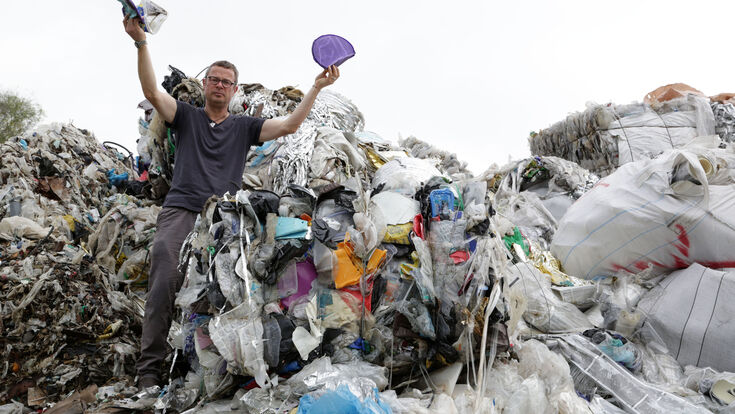Circular Economy : Germany is working on a sustainable packaging industry

More packaging and fuller trash cans: With 227.5 kilograms of packaging waste per capita, Germany was the European leader in waste generation in 2018. Due to the change in consumption behavior in the Corona Lockdown, this figure will be significantly exceeded again in 2020. The large amount of packaging waste and the resulting increase in resource consumption have long since become a problem.
Thomas Müller-Kirschbaum, Henkel AG & Co. KGaA, co-leader of the working group on packaging of the Circular Economy Initiative Germany says: "Against the background that the volume of packaging and waste in Germany is high and will continue to rise, Circular Economy approaches offer potential to reduce negative environmental impacts." In a circular economy, he said, the aim is to "avoid packaging where it can be avoided; use resources effectively; and make packaging usable for as long as possible, reusable and recyclable to a high standard."
Plastic packaging is recycled particularly rarely
While paper, cardboard, glass and metal are recycled comparatively frequently (over 85 percent) due to their varietal purity and high added value (metals), this is only the case for 47 percent of plastic packaging in Germany. More than half of plastic packaging waste is incinerated (2018 values). Moreover, only a fraction of the recycled material goes back into packaging: In the production of new packaging, only 10.9 percent recyclate was used on average in 2019, and consequently almost 90 percent virgin material.
In social discourse, plastics are sometimes seen per se as a particularly environmentally harmful material. However, if you look at life cycle assessments of various packaging concepts, this blanket statement is often refuted. Packaging cannot therefore be divided into environmentally compatible and environmentally harmful packaging solely on the basis of its material. When assessing the sustainability of packaging, experts have to take into account a wide range of sometimes conflicting criteria along the entire life cycle. For example, improvements with regard to resource protection can lead to higher energy consumption and thus cause more emissions. These in turn have negative consequences for the climate.
Suitable framework conditions and incentives are needed
As an example, the experts from the Circular Economy Initiative Germany looked at plastic packaging for detergents and cheese. It became clear that the packaging market is fragmented. There are a large number of packaging manufacturers who make their packaging optimized to the requirements of a specific product. This leads to a diverse amount of packaging and packaging materials, which in turn would need a high number of process steps in the recycling infrastructure in terms of sorting, plastic fractions and various recycling processes. As a result, the cost of recycling is so high that it cannot be implemented economically. This can be counteracted at various levels, but there are no simple and universally applicable solutions. One approach is to increase the use of monomaterials, a good example being the PET bottle. This must be accompanied by an overall harmonization of material flows at the EU level, i.e. not so many different plastic variants must be put into circulation. In order for this to be implemented, appropriate regulatory framework conditions with economic incentives are needed from the political arena.
Co-working group leader Peter Elsner, Karlsruhe Institute of Technology (KIT) and Fraunhofer Institute for Chemical Technology (ICT), explains: "Existing political measures, such as the Packaging Act, the waste avoidance program or recycling quotas, are in the right place, but have gaps. Among other things, there is a lack of binding targets, control mechanisms or quality specifications. Quality is important, because a PET bottle should at best become a PET bottle or another form of food packaging again and not, as often happens, a drainage pipe or a textile fiber, for example. Marketers would also have to take greater responsibility for the life cycle of packaging here."
